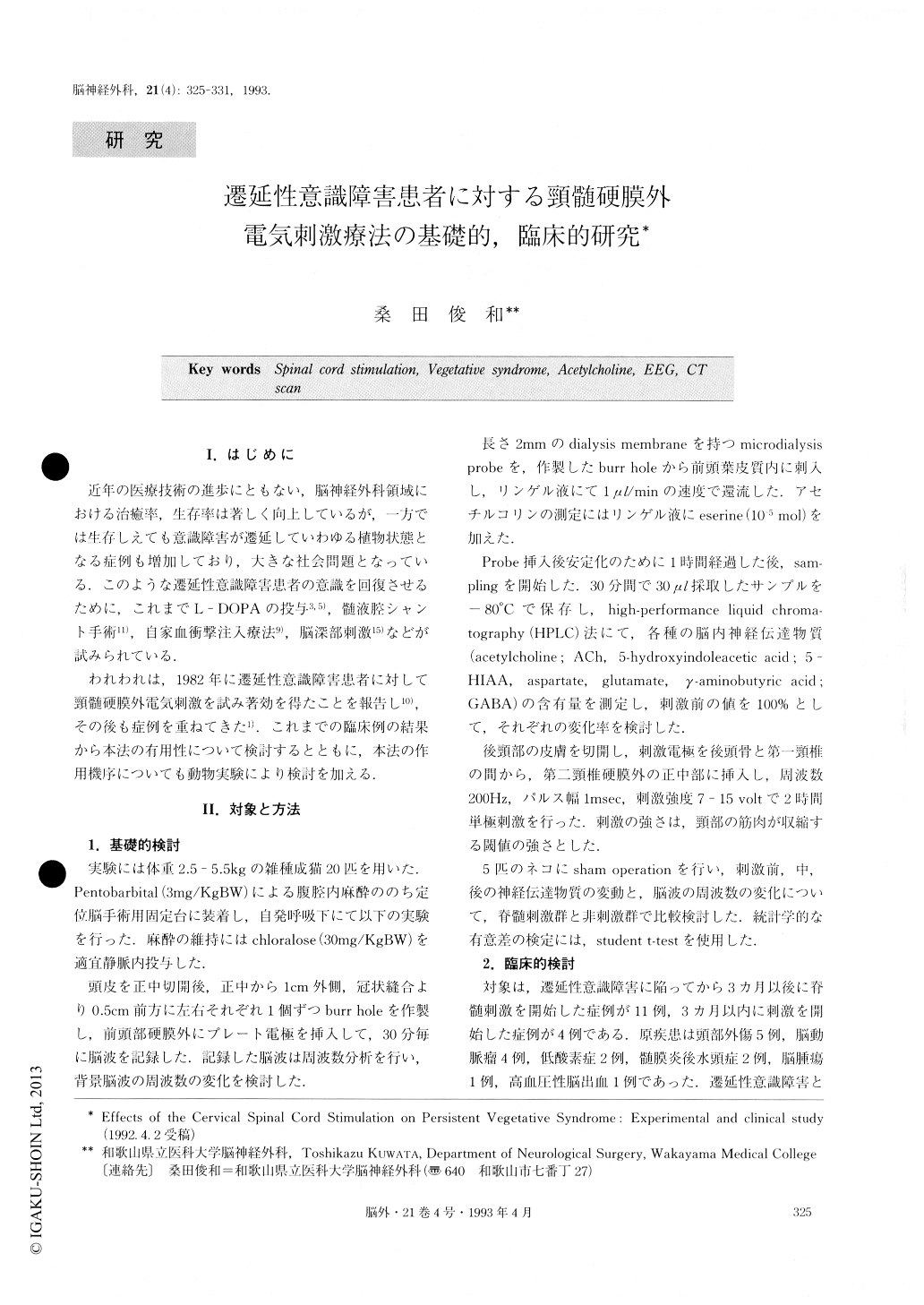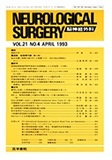Japanese
English
- 有料閲覧
- Abstract 文献概要
- 1ページ目 Look Inside
I.はじめに
近年の医療技術の進歩にともない,脳神経外科領域における治癒率,生存率は著しく向上しているが,一方では生存しえても意識障害が遷延していわゆる植物状態となる症例も増加しており,大きな社会問題となっている.このような遷延性意識障害患者の意識を回復させるために,これまでL-DOPAの投与3,5),髄液腔シャント手術11),自家血衝撃注入療法9),脳深部刺激15)などが試みられている.
われわれは,1982年に遷延性意識障害患者に対して頸髄硬膜外電気刺激を試み著効を得たことを報告し10),その後も症例を重ねてきた1).これまでの臨床例の結果から本法の有用性について検討するとともに,本法の作用機序についても動物実験により検討を加える.
Influence of spinal cord stimulation (SCS) on elec-troencephalograms (EEGs) and intracerebral neuro-transmitters were studied in cats, and clinical usefulness of the stimulation was reviewed in patients with vegetative syndrome.
Cat spinal cords were transdurally stimulated at the second cervical spine for two hours with a pulse width of 1.0 milliseconds, a frequency of 200 Hz and an am-plitude ranging from 10 to 15 volts. EEGs were re-corded at the frontal epidural space and neurotransmit-ters in the frontal cortex, such as acetylcholine (ACh), 5-hydroxyindoleacetic acid (5- HIAA), aspartate, gluta-mate and y-aminobutyric acid (GABA), were mea-sured by an in vivo microdialysis method. The back-ground activities of the EEGs were increased by 2 Hz after the SCS. The ACh content increased to 320% three hours after initiation of the SCS, although the other four neurotransmitters did not show any change. Epidural SCS at the upper cervical level was applied to 15 vegetative patients for the amelioration of their vegetative state. Eleven of the 15 patients were treated later than three months after the onset of vegetative state and the other four within three months. Three of the 11 patients treated late and one of the four treated early escaped from the vegetative state (good group). Some clinical improvements were observed in four cases (fair group), two of whom were treated late and the other treated early. The other seven patients showed no improvement (no change group). Most cases of the “good” and “fair” group had relatively small and localized lesions on CT scans or MR images, and showed bilateral fifth wave of auditory brain stem re-sponse and/or N20 of short latency SEP irrespective of the prolongation of their latency. On the other hand, the “no change” group had large lesions or diffuse cor-tical atrophy and did not show fifth wave and/or N20. Patients treated within three months got better results than those in cases treated later than 3 months. This study suggests that SCS is able to improve con-sciousness in vegetative patients with desynchroniza-tion of EEG and an increase in intracerebral ACh, both of which seem to he induced by activation of the ascending cholinergic reticular activating system.

Copyright © 1993, Igaku-Shoin Ltd. All rights reserved.


